Spiraling Costs and a Broken Insurance Market — What Went Wrong With Obamacare
Masked by subsidies, the "Affordable" Care Act's one-size-fits-all system has pushed up prices and made healthcare unaffordable.
In light of the Obamacare collapse described in this essay, you should also read our conservative vision for American healthcare. It’s a quick read you can use!
This analysis is free, but with Premium Membership you get MORE. Join today.
by Lawrence Wilson
November 26, 2025
The government shutdown might be over, but the political and financial problems that dog Obamacare haven’t gone away.
Congress is now debating a second extension of the temporary tax credits that have shielded Obamacare users from rising costs for five years. Without the subsidies, Democrats say millions of Americans will be priced out of the health insurance market at the stroke of midnight on New Year’s Eve.
President Donald Trump and other Republicans don’t want an extension: they want a transformational change that eliminates what they say are the unworkable policies and perverse incentives that have plagued the program from the beginning.
It isn’t just Republicans who say Obamacare has gone awry. Many experts, and even some Democrats, recognize that the program touted as the “Affordable Care Act” has backfired.
Why I support Tea Party Patriots and you should too! Go to TeaPartyPatriots.org.
Here’s how they think Obamacare went off course, how it might be overhauled, and how it upended the wider health insurance market.
Failed Aims
The Affordable Care Act aimed to make health insurance affordable for everyone and lower health care costs across the board.
“The reality of the [Affordable Care Act] could not be more different,” Douglas Holtz-Eakin, president of the think tank American Action Forum, said in written comments to a Senate committee on November 19.
Republicans have stated that the system was badly designed, if not outright doomed to failure, from the beginning. Now, some Democrats agree that it has not been successful.
Sen. Peter Welch (D-VT) said as much in a November 6 speech imploring colleagues to extend the temporary tax credits, which expire in December.
“I owe you an answer on why it is I am standing here today asking to extend something that was temporary,” Welch said. “Here is the reason: We did fail to bring down the cost of health care.”
Sen. Bill Cassidy (R-LA) said on November 19: “I think there’s remarkable agreement between Democrats and Republicans. Obamacare failed to give access to all Americans to health care, and Obamacare failed to control health care costs.”
Rising Costs
When Obamacare was proposed, the Congressional Budget Office projected that enrollment would reach 29 million by 2019 and that the percentage of uninsured adults would drop to 6 percent from 17 percent.
That didn’t come close to happening. By 2019, enrollment had plateaued at roughly 11.4 million, and about 11 percent of adults remained uninsured.
A year later, Congress altered the program to help Americans cope with the economic downturn caused by the COVID-19 state of emergency.
The key change was the addition of “enhanced” tax credits that made middle-income households eligible for subsidized health care and allowed some low-income households to get coverage with a zero-dollar premium.
The enhanced credits were offered for two years, beginning in 2021, then extended through 2025.
Enrollment skyrocketed, doubling in five years. But the cost was climbing rapidly, too.
Even before the enhanced tax credits came online, premiums had more than doubled since 2013, the year before Obamacare began. By 2025, the increase reached nearly 133 percent, about four times the rate of inflation. And Obamacare itself is the key driver of higher premiums.
With traditional health insurance (and other forms of insurance), the price to the customer is based on the risk to the insurer and the type of coverage they choose.
Obamacare, however, is different.
A key selling point of Obamacare was that it largely ended the practice of excluding people from health coverage because of preexisting conditions. No one would be denied coverage because of illness, and all plans were required to offer the same set of minimum benefits.
As this one-size-fits-all system treats high- and low-risk customers the same, many younger, healthier people were priced out of the market, leading to higher premiums for everyone else. And because preexisting conditions are not a barrier to coverage, those consumers then enter the market after they become ill, raising costs even higher.
Those increases spread across the industry because the Affordable Care Act requires insurers to offer Obamacare-compliant policies to individuals and small groups in the commercial market.
The solution, according to Sen. Ron Johnson (R-WI), is to cover those with existing illnesses in high-risk pools, which allow groups of people within Obamacare to be priced and subsidized separately.
“You have to reestablish those,” Johnson said. “You have to start by covering people with preexisting conditions.
“You bring as much free market back into health care as possible, so people are actually competing for customers with price, customer service, and quality.”
A Spiral Masked by Subsidies
Gross federal subsidies of Obamacare now stand at an estimated $138 billion per year, according to the Committee for a Responsible Federal Budget.
Those subsidies have masked the rise in premiums, allowing them to rise virtually unchecked, according to Brian Blase, founder of think tank Paragon Health Institute. “When enrollees pay only a small slice of the premium or no premium at all, insurers face almost no price discipline,” Blase told senators on November 19.
By 2024, 80 percent of Obamacare customers qualified for plans costing them no more than $10 per month, according to the Treasury Department. That created a spiral that kept pushing the cost up.
“Higher premiums created pressure for still more subsidies. More subsidies lock in a high-cost system and permit large insurers and hospital systems to remain inefficient,” Blase said.
Rising premiums also drove out general-market consumers who did not qualify for a subsidy, causing even further increases, according to Dr. Mehmet Oz, administrator of the Centers for Medicare and Medicaid Services.
The Obamacare market was designed for a 50/50 mix of private-sector customers and those who need financial help, Oz said in a November 16 interview with CNN. “We have priced the systems now so heavily with government subsidies that it crowds out the private shopper,” he said.
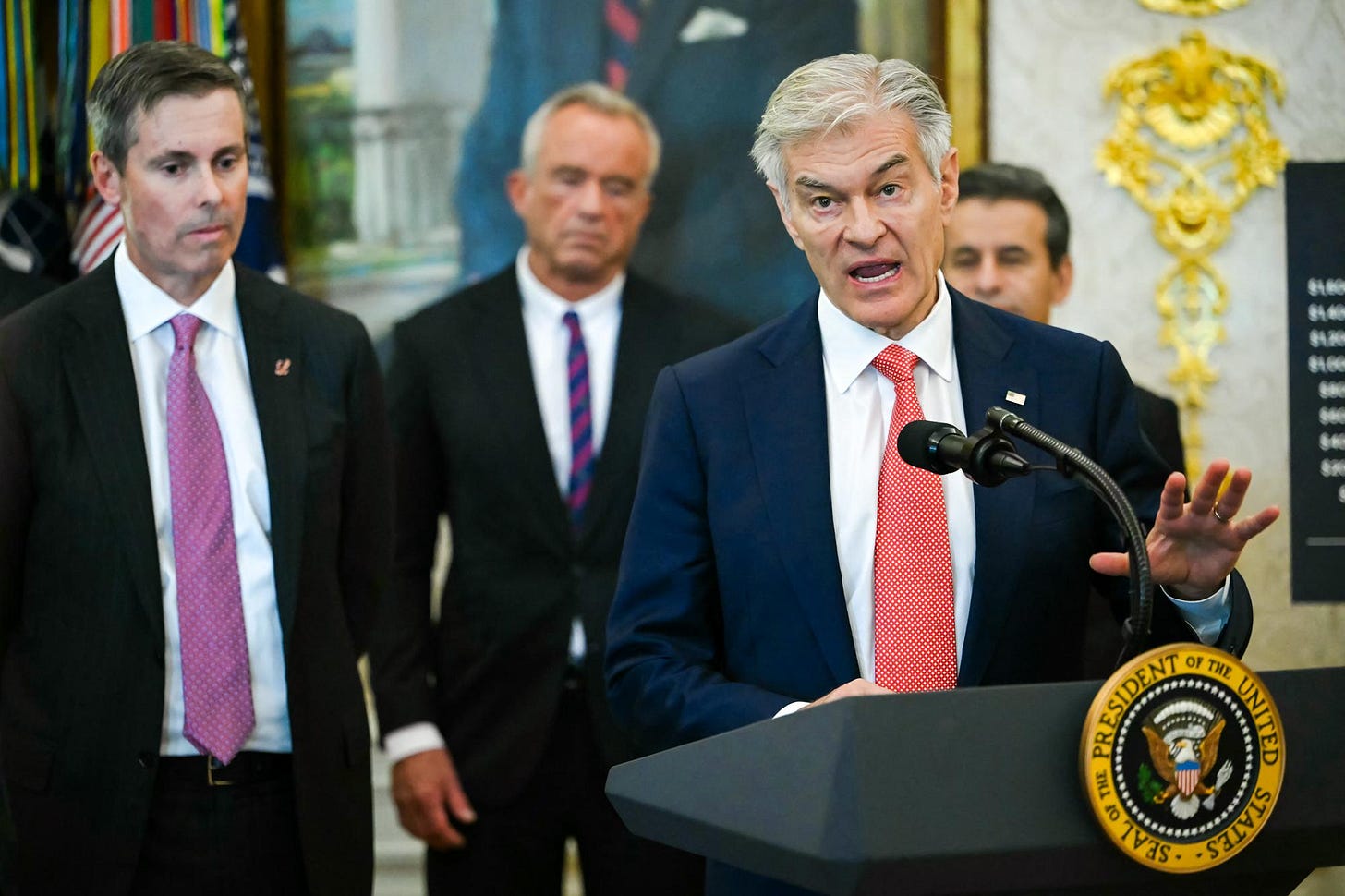
Perverse Incentives in the Workplace
Large employers, those with more than 50 employees, face a $2,900 fine for each full-time worker who receives an Obamacare subsidy. That’s to encourage companies to offer employer-sponsored health insurance.
In reality, the fine may have the opposite effect for employees earning below a certain level, according to Holtz-Eakin.
“You could do the math and figure out that ... it made a lot of sense for employers to just stop being in the insurance business, put their workers in the exchanges, and both the worker and the employer could come out ahead,” he said.
That appears to have happened in many smaller companies, which have no threat of a fine to induce them to buy insurance for employees. The year before Obamacare began, 85 percent of companies with 25 to 49 workers offered health insurance for their employees. By 2025, that had fallen to 64 percent.
Ripe for Fraud
When the enhanced tax credits were introduced in 2021, 42 percent of the uninsured population qualified for a policy with a zero-dollar premium. To boost and maintain enrollment during the health emergency, eligibility checks were relaxed, and reenrollment was automated. Moreover, insurance brokers receive a commission for each person they enroll.
Those factors made the program ripe for fraud and abuse, according to Blase. “Many enrollees were signed up without their knowledge or consent,” he said.
Blase noted that some unscrupulous vendors promised enrollees cash benefits, and others were moved from one plan to another without their consent.
Approximately 2.8 million people were dually enrolled in Medicaid or the Children’s Health Insurance Program in multiple states in 2024 or simultaneously enrolled in one of those programs and an Obamacare plan, according to federal data.
Tellingly, 40 percent of those enrolled in a zero-premium plan in 2024, more than 4 million people, filed no medical claims at all.
The national average for zero-claim health insurance customers is 15 percent, according to Paragon Health Institute, which estimates that taxpayers spent $35 billion in 2024 to insure people who were unaware they had coverage.
Government Versus Market Solutions
While Democrats acknowledge that rising health care costs are a problem, they say it’s not related to Obamacare. Proposed solutions generally involve increasing corporate taxes and cracking down on corporate abuses.
“Insurance premiums are skyrocketing,” Rep. Jonathan Jackson (D-IL) told The Epoch Times on Nov. 20. He listed government negotiations on drug prices and higher corporate taxes as partial solutions. Sen. Ron Wyden (D-OR) said on Nov. 19 that reducing health care costs “means reining in insurance company abuses across the health care system.”
Republicans, by contrast, generally favor market-based reforms that give consumers more control over their health care spending.
“The free market guarantees three things,” Johnson said. “The lowest possible price and cost, the best possible quality, and the best level of customer service.”
Trump has proposed a direct cash payment to low- and middle-income Americans to be used for health care expenses. Cassidy and Sen. Rick Scott (R-FL) have proposed similar ideas.
Rep. Chip Roy (R-TX) named direct primary care, health sharing ministries, and expanded health savings accounts as ways to empower patients to make their own health decisions.
“I want to free up individuals to have better options,” Roy said. “If you’re starting there, then you’re going to be transformative, and that will drive prices down.”
In 2017, Trump sought not once but three times to “repeal and replace” Obamacare, an effort ultimately defeated by the defection of Sen. John McCain (R-AZ), who had campaigned for re-election on a promise to vote for, not against, exactly that. The following year, 2018, was dominated by Russiagate and the midterm elections, which Republicans lost.
Yet Trump is clearly committed to reform. And tackling Obamacare could not only save U.S. healthcare, it could greatly boost the economy and help slash the federal deficit. The question is not political will in the White House, but on Capitol Hill.
Congress is expected to vote in mid-December on an extension of enhanced subsidies and possibly other health care reforms. But with the illusion of “affordability” shattered, the possibility of real reform, if not in December then sometime in the next three years, is more likely than it’s been in more than a decade.
— This essay is published in cooperation with The Epoch Times.


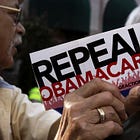
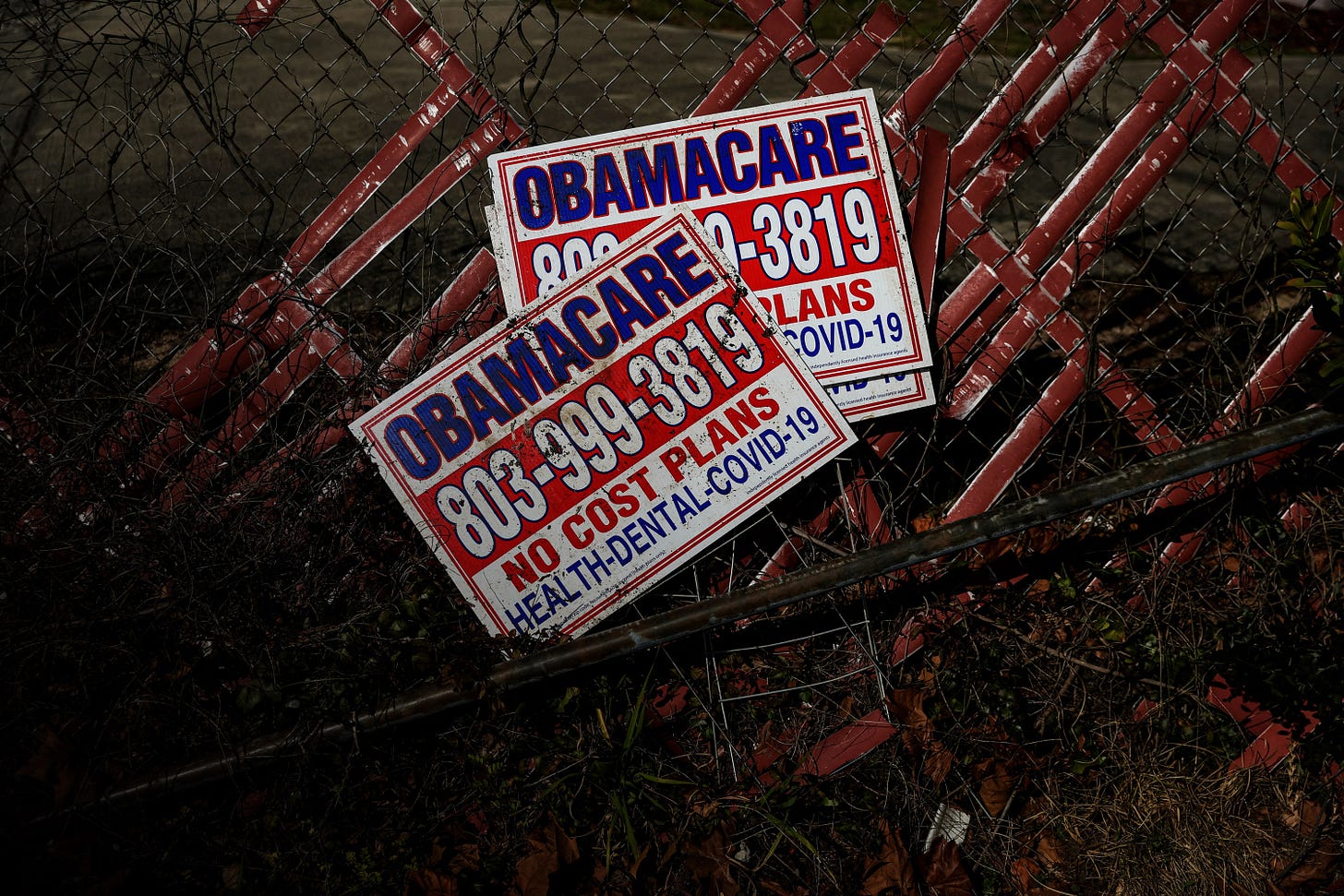

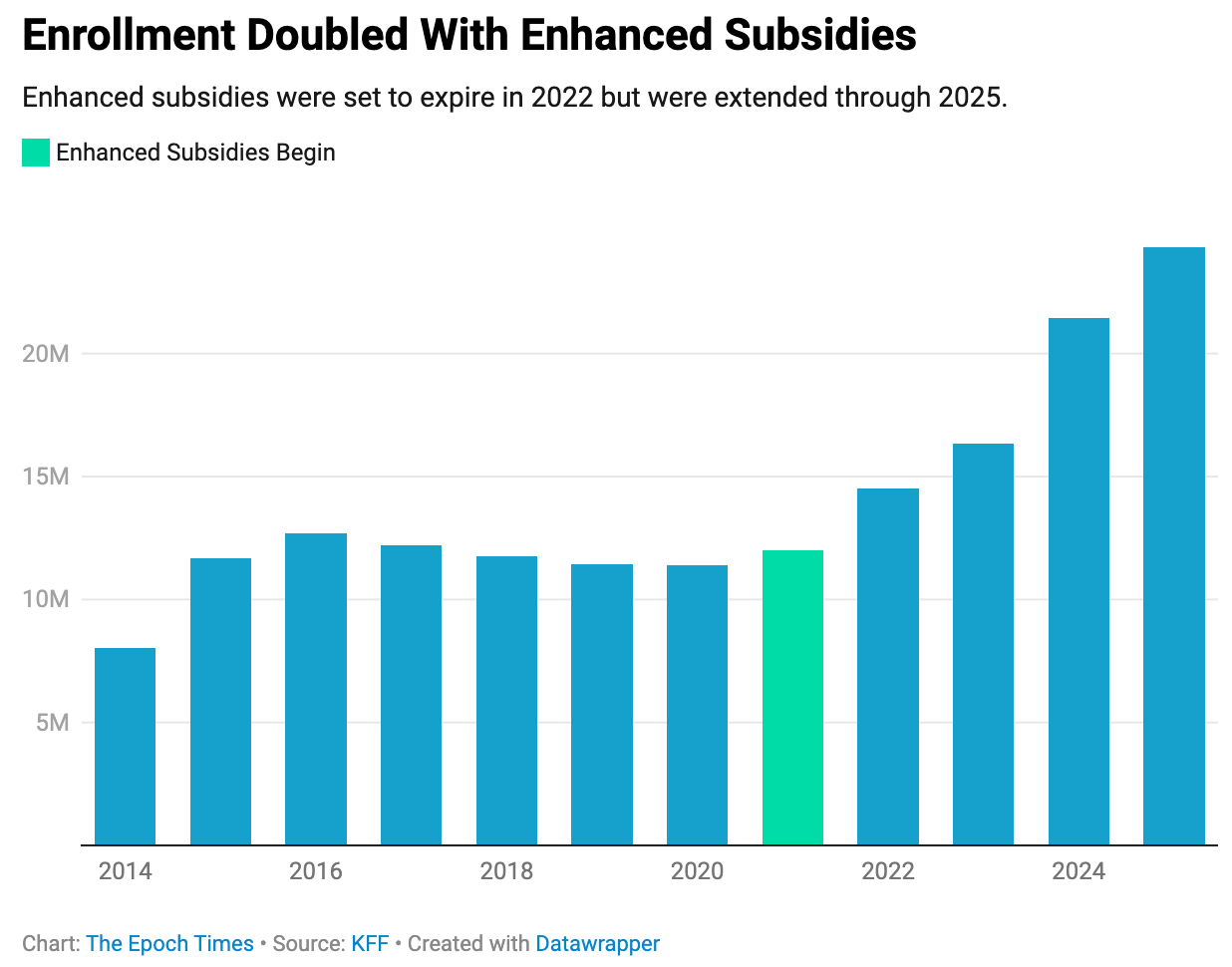
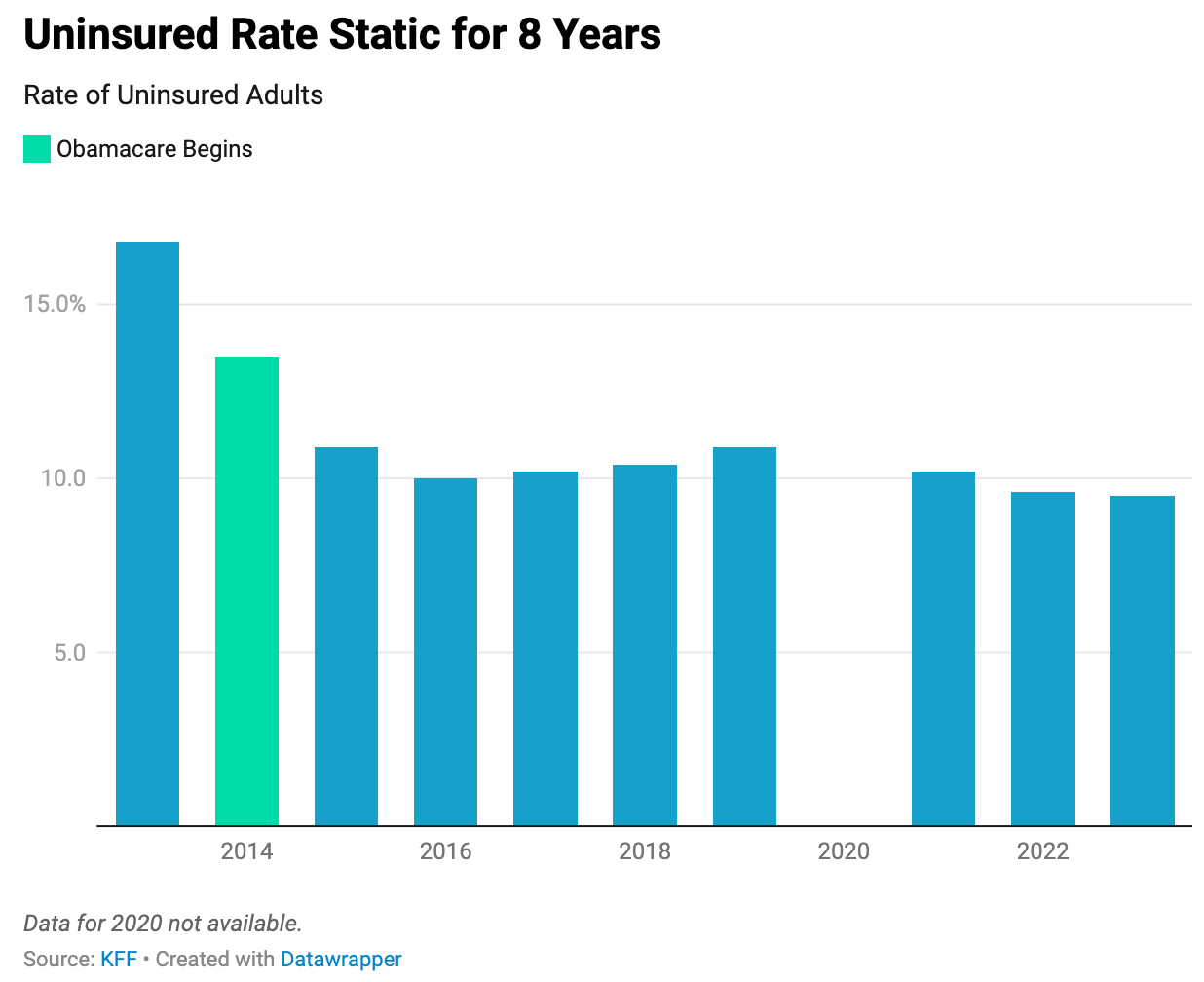

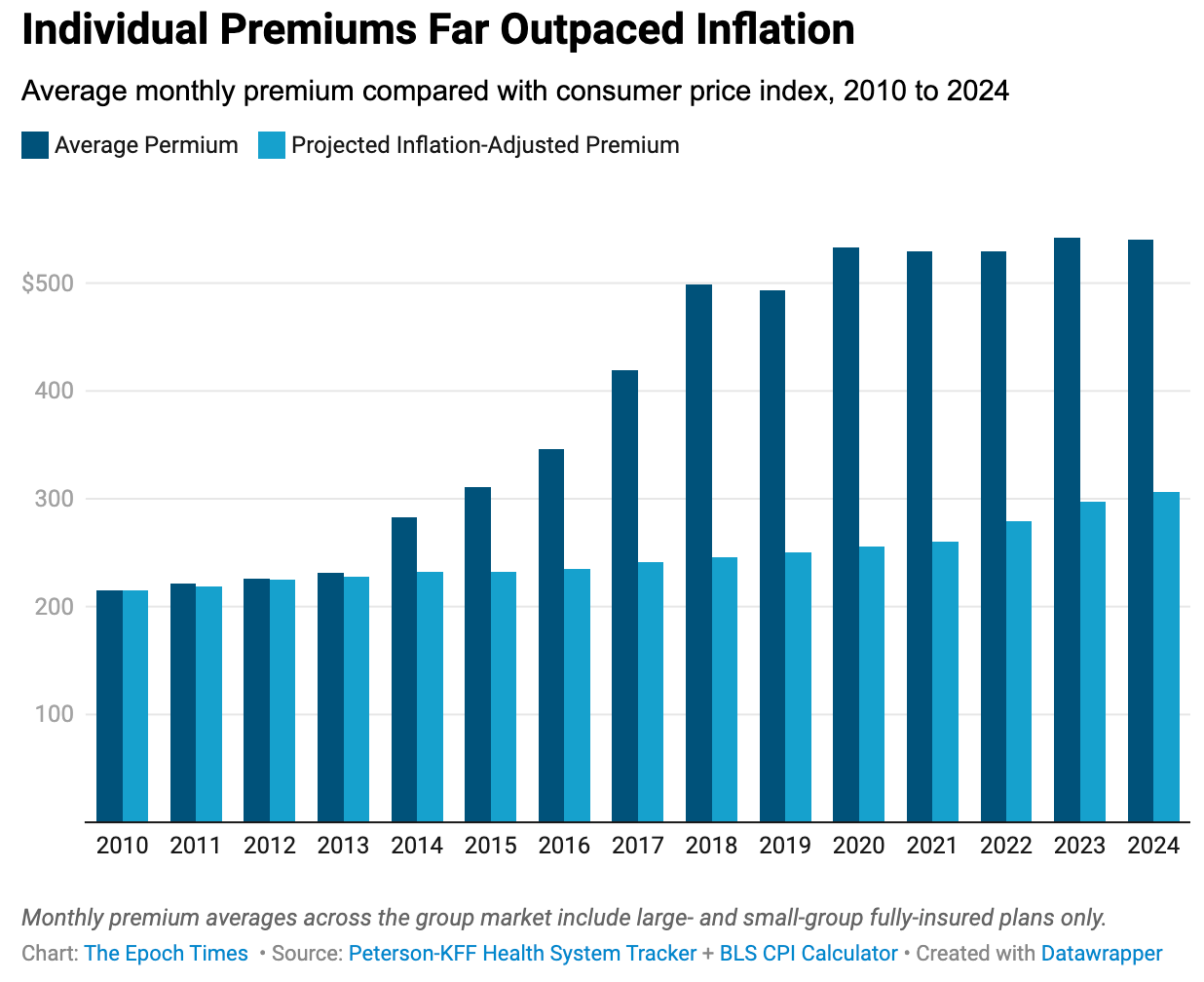
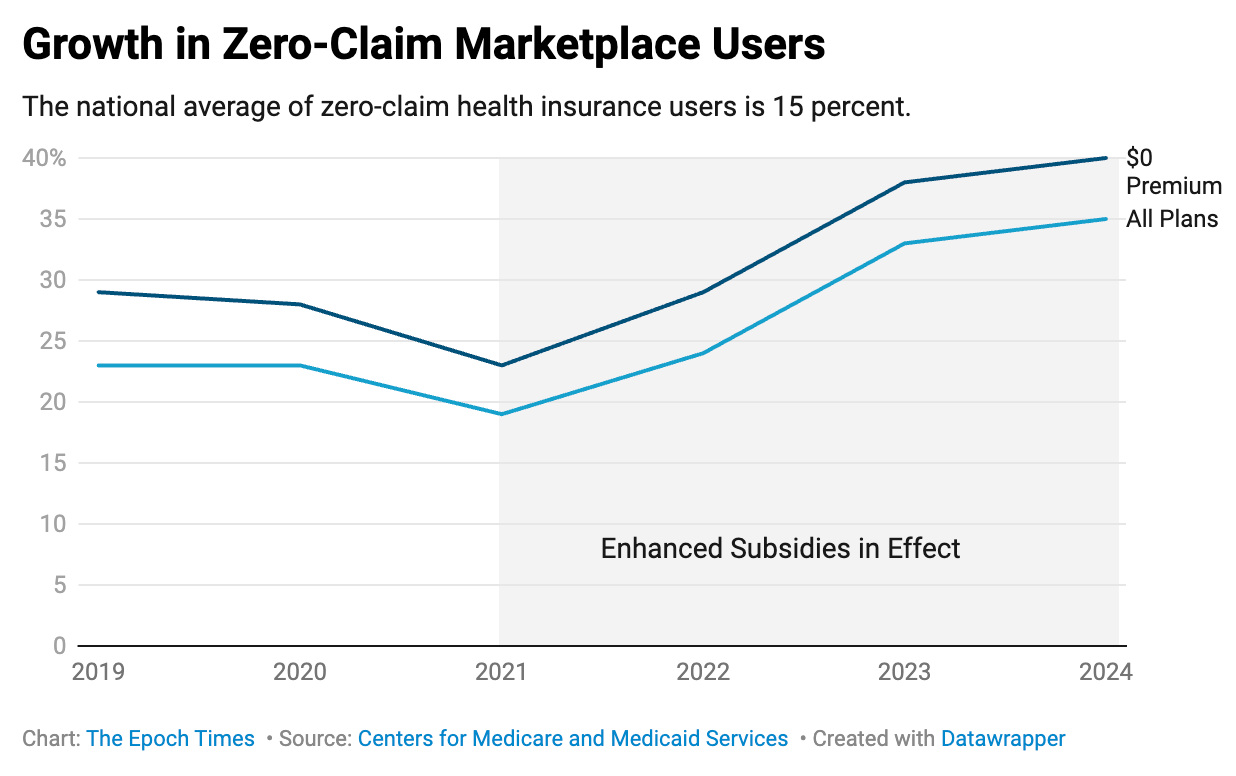





Excellent discussion on a complicated topic. Seems also that without transparency in pricing to spur competition among medical providers, there’s little affordability incentive.
It was broken on day one, and the plan was single payer system all along. Without subsides it cannot work, because no one can afford it except congress.
Lebo Von Lo~Debar
Former/Always 82nd Airborne Infantryman, Disabled Veteran for Life, & Author of the book, "The Separation of Corporation and State" subtitled "Common Sense and the Two-Party Crisis" Available on Amazon.
https://a.co/d/fy5rSdW